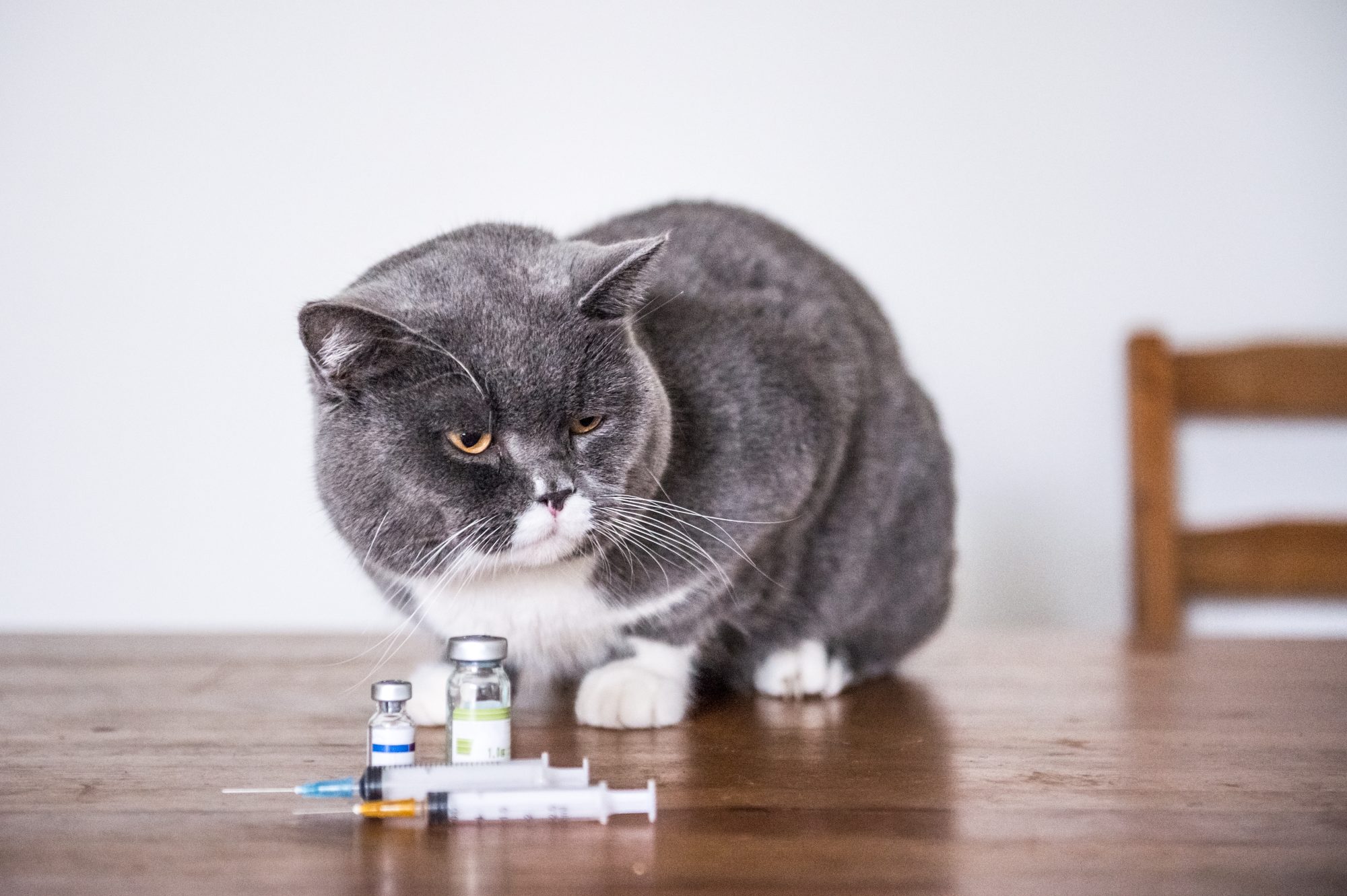
Perhaps one of the more common conditions we diagnose at Sky Canyon Animal Hospital, diabetes in cats is something that feline lovers should be aware of. Knowing what signs to look for and when to bring your cat to see us is paramount to dealing with a disease that is often quite manageable.
The Deets on the ‘Betes
Cats (and most mammals) need a hormone called insulin in order to successfully convert the starches and sugars in the diet into energy usable by the body. Insulin is secreted by the pancreas in response to a meal, aiding the process of digestion.
In pets with diabetes mellitus, this system is broken. One of two major issues has occurred:
- There is not enough insulin being produced by the pancreas
- The body’s cells need more insulin than normal (insulin resistance)
Regardless of which of these scenarios has occurred, the result is the same. Not enough insulin causes sugar (glucose) to accumulate in the blood and not be used by the cells. The resulting high blood sugar can have serious consequences.
Signs of Diabetes in Cats
The symptoms of diabetes that we see outwardly are a direct result of the inability of the cells to absorb glucose and its subsequent persistent overabundance in the bloodstream and urine.
Cats affected by diabetes often have:
- Excessive thirst
- Increased urination
- Marked increase in appetite
- Weight loss despite a good appetite
- A dull haircoat
- Plantigrade stance in the rear limbs (does not occur in all cases)
There are certainly other conditions that can result in similar symptoms. If you suspect that your cat may be diabetic, we will want you to make an appointment to see us right away.
Untreated, diabetes can become very serious. Affected cats may develop a condition after a period of time called ketoacidosis. Overproduction of ketones, a byproduct of metabolism that is increased in the absence of usable glucose, can make diabetic cats very sick. Pets who enter ketoacidosis will require intensive therapy to help rehydrate them and correct electrolyte imbalances.
Diagnostics such as blood and urine testing can help our doctors to diagnose the problem as diabetes and get your pet started on appropriate treatment.
Diabetes in cats is typically treated with specific diet changes and insulin therapy. While this can be daunting at first, most cats (and cat owners) do quite well.
Protecting Your Pet
Of course no one wants their pet to develop diabetes if it can be helped. Sometimes, though, despite our best efforts, diabetes occurs. In some pets there may even be a genetic predisposition.
There are some things you can do to decrease your pet’s risk, though:
- Encourage healthy activity each day
- Provide your pet with a quality diet that is low in carbohydrates
- Help your pet to maintain a healthy body weight
- Keep your pet’s routine wellness appointments
- Allow routine screening tests to be performed as recommended
Thankfully, though, when diabetes in cats happens most pets respond very well to treatment, especially when diagnosed early. Being an informed pet owner goes a long way towards preventing this disease and addressing it early when it does occur.
We are always here if you have questions or concerns about your cat’s health, be it diabetes or anything else. Helping pets is what we do best, don’t hesitate to ask if you need us.

